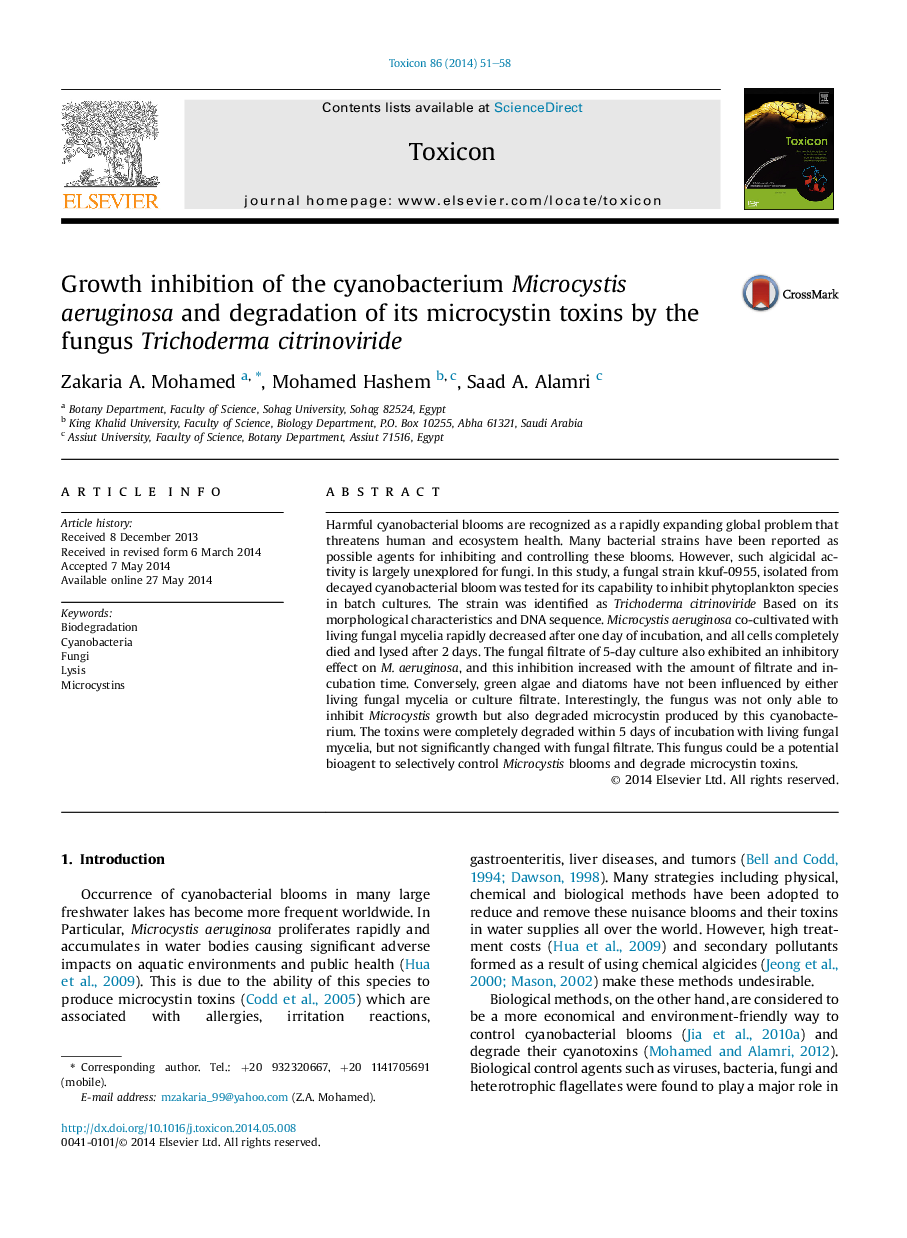| کد مقاله | کد نشریه | سال انتشار | مقاله انگلیسی | نسخه تمام متن |
|---|---|---|---|---|
| 2064658 | 1544149 | 2014 | 8 صفحه PDF | دانلود رایگان |

• We demonstrated the lysis of the cyanobacterium Microcystis aeruginosa by a fungal strain.
• The strain was identified as Trichoderma citrinoviride based on DNA sequence.
• The strain can also degrade microcystin toxins released in Microcystis cultures.
• The fungus could be used as a bioagent for controlling harmful cyanobacteria.
Harmful cyanobacterial blooms are recognized as a rapidly expanding global problem that threatens human and ecosystem health. Many bacterial strains have been reported as possible agents for inhibiting and controlling these blooms. However, such algicidal activity is largely unexplored for fungi. In this study, a fungal strain kkuf-0955, isolated from decayed cyanobacterial bloom was tested for its capability to inhibit phytoplankton species in batch cultures. The strain was identified as Trichoderma citrinoviride Based on its morphological characteristics and DNA sequence. Microcystis aeruginosa co-cultivated with living fungal mycelia rapidly decreased after one day of incubation, and all cells completely died and lysed after 2 days. The fungal filtrate of 5-day culture also exhibited an inhibitory effect on M. aeruginosa, and this inhibition increased with the amount of filtrate and incubation time. Conversely, green algae and diatoms have not been influenced by either living fungal mycelia or culture filtrate. Interestingly, the fungus was not only able to inhibit Microcystis growth but also degraded microcystin produced by this cyanobacterium. The toxins were completely degraded within 5 days of incubation with living fungal mycelia, but not significantly changed with fungal filtrate. This fungus could be a potential bioagent to selectively control Microcystis blooms and degrade microcystin toxins.
Journal: Toxicon - Volume 86, August 2014, Pages 51–58